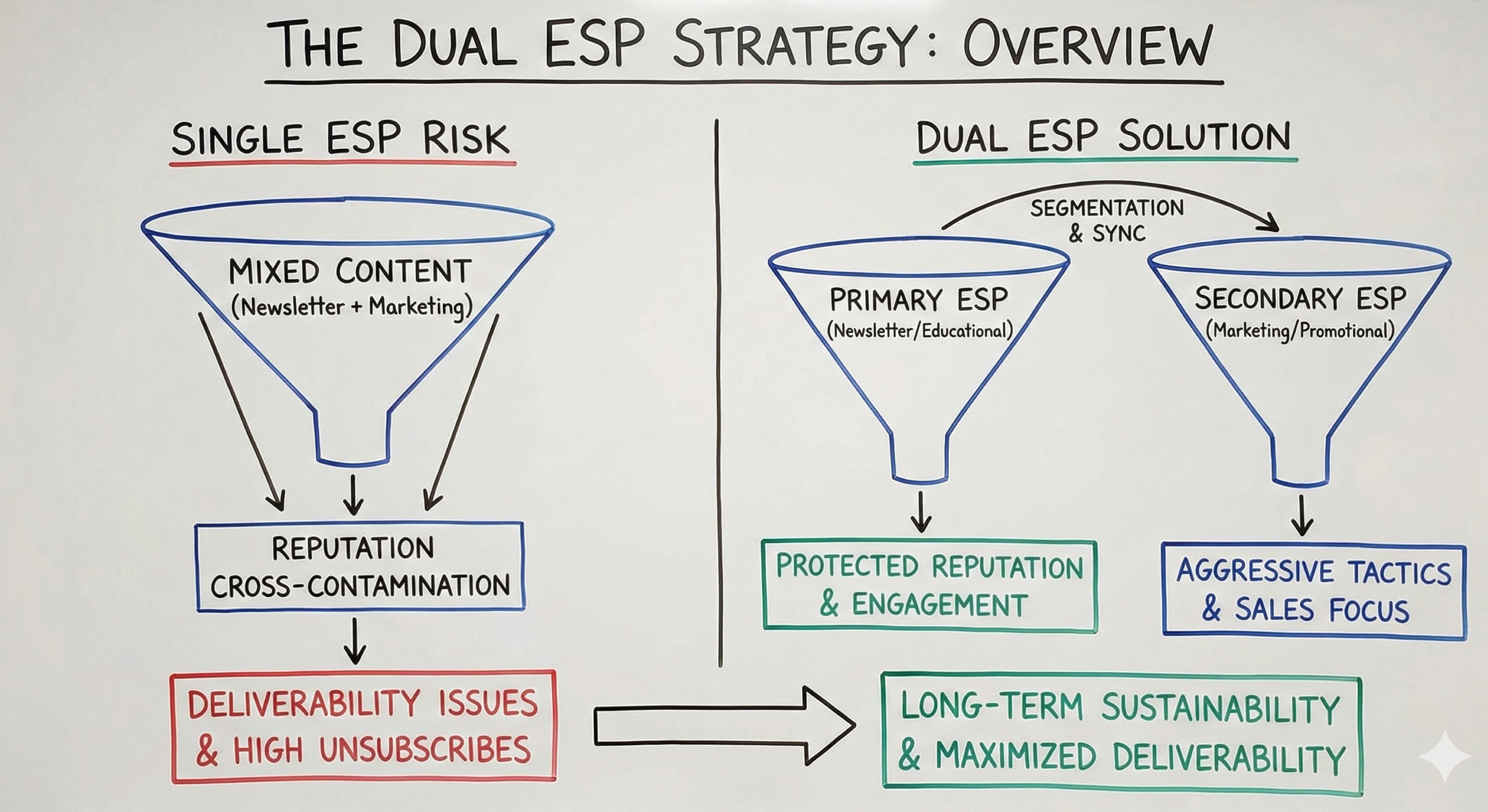Why Advanced Email Marketers Are Using Dual ESP Strategies for Newsletter and Marketing Separation
Discover why advanced content creators use dual ESP strategies to separate newsletter and marketing emails. Protect deliverability and boost engagement rates.
•6 min read
Details
Topic:
Platforms:

Loading content...

